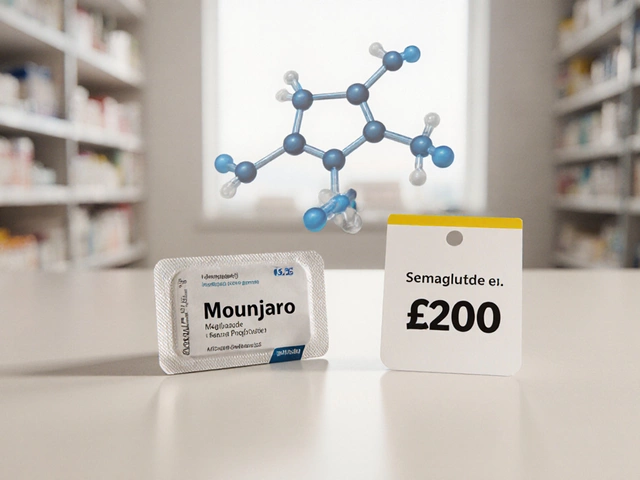Everyone wants clear skin, but most people get stuck at the first step. The truth? You don't need a 10-step routine to get started. The basics do most of the heavy lifting. Know what matters most? Cleaning your skin right. That means ditching harsh soaps and picking a gentle cleanser that gets rid of sweat, dirt, and extra oil—without leaving your face tight or itchy. If the skin feels squeaky after washing, it's probably stripped of oils it actually needs.
Already feeling lost among shelves of face washes? Don’t stress. Match your cleanser to your skin type. If your face gets oily and shiny, a foaming or gel cleanser can help. If dry patches are your battle, try cream-based or hydrating cleansers. There’s no universal “best”—just what works for your skin right now.
- Face Cleansing: Getting the Basics Right
- Why Exfoliation Matters (and How to Do It)
- Moisturizers: Not Just for Dry Skin
- The Sunscreen Step You Can't Ignore
- Spot Treatments: Dealing with Breakouts
- Customizing Your Skincare Routine
Face Cleansing: Getting the Basics Right
Cleansing is where everything starts. Skipping it means you’re letting dirt, oil, sweat, sunscreen, and grime sit on your face. If you wash your face the right way, the rest of your routine works better. The American Academy of Dermatology says you should wash your face twice a day—once in the morning and once at night. And definitely after sweating hard from things like workouts.
Using the wrong kind of cleanser can mess things up quickly. Harsh soaps strip away natural oils and make your skin freak out—either with more oil or with dryness and flakiness. Gentle cleansers are best, and you should look for ones made for your skin type. Here’s a breakdown of what usually works:
- Oily skin: Go for gel or foaming cleansers. They help cut down shine without over-drying.
- Dry or sensitive skin: Cream or lotion cleansers that add moisture and don’t irritate are good picks.
- Combination skin: Look for a mild cleanser—nothing too harsh or too moisturizing.
Check this out: a 2023 skincare survey found that 66% of people with breakouts admitted to using body soap or harsh cleansers on their face. Most saw better skin within weeks after switching to a gentle face wash. It's a simple move, but it works.
So how do you do it right? Follow these steps for basic face cleansing that actually helps:
- Always wash with lukewarm (not hot) water. Hot water can dry out your skin fast.
- Use only a dime-sized amount of cleanser—enough to cover your face, but not so much that it takes ages to rinse off.
- Rub your face in circles gently for about 20-30 seconds using your fingertips. Don’t scrub—skin doesn’t like being roughed up.
- Rinse off completely. Any leftover cleanser can clog pores or irritate later on.
- Pat your face dry with a clean towel. Don’t rub.
Here's a quick look at how different cleansers stack up for various skin types:
| Skin Type | Best Cleanser Type | What to Avoid |
|---|---|---|
| Oily | Foam/Gel | Bar soap, heavy cream cleansers |
| Dry | Cream/Lotion | Foam cleansers, anything with alcohol |
| Sensitive | Fragrance-free, hydrating | Scrubs, fragranced products |
| Combination | Mild, balanced cleansers | Anything too stripping or too rich |
Washing your face might seem basic, but if you get this step right, everything else in your skincare basics routine works way better. Ignore the urge to overcomplicate—simple and gentle wins every time.
Why Exfoliation Matters (and How to Do It)
Ever noticed your skin looking dull or feeling a bit rough? That’s usually dead skin cells piling up. Exfoliation clears them away, making your face look brighter and giving it a smoother texture. If your moisturizer isn’t soaking in well, dead skin might be the main thing blocking it. Here’s the deal: regular, gentle exfoliation can help with clogged pores, prevent breakouts, and even out your skin tone. Most dermatologists recommend exfoliating once or twice a week as a sweet spot for most folks.
There are two main ways you can exfoliate: physically or chemically. Physical exfoliation uses scrubs or brushes—the gritty stuff you feel when you rub a product in. Chemical exfoliation is all about acids, like glycolic or salicylic acid, breaking down dead skin without any scrubbing. Chemical methods might sound scary, but these are often less harsh than rubbing your face raw with hard scrubs. Go easy, no matter what method. Overdoing it, especially with gritty scrubs, can leave skin red and sensitive.
| Type | Common Ingredients | How Often | Best For |
|---|---|---|---|
| Physical Exfoliation | Sugar, microbeads, brushes | 1-2 times/week | Non-sensitive, thicker skin |
| Chemical Exfoliation | Glycolic acid, salicylic acid, lactic acid | 1-3 times/week | Oily, acne-prone, uneven skin |
If you’re new to exfoliating, start slow and read your labels. Don’t use both physical and chemical on the same day. Always follow up with moisturizer—your skin will soak it up better right after. And don’t forget sunscreen the next morning, because fresh skin is a bit more sensitive to sunlight.
Tip: If you’re dealing with breakouts, skip the rough scrubs. Try products with salicylic acid, which digs deep into pores. People with dry or sensitive skin often do better with lactic acid or enzyme options. It’s all about listening to what your skin needs.
Remember, smart exfoliation is about balance, not scrubbing like you’re sanding a plank of wood. Gentle, regular care will pay off faster than going overboard with tough products. If you have any doubts, patch test first or check with a dermatologist—there’s no shame in asking for advice when it comes to your skincare basics.
Moisturizers: Not Just for Dry Skin
Think moisturizers are just for flaky, dry skin? That's a common myth. No matter if your skin is oily, combo, or somewhere in between, every skin type needs moisture. What matters is picking the right formula—one that fits your needs and doesn't clog pores or make you shiny.
When you skip moisturizer, your skin can actually get oilier. Why? If you wash your face and leave it bare, your skin kicks into survival mode and pumps out more oil to make up for the loss. This is why people with oily and acne-prone skin often notice things improve when they add a lightweight, oil-free moisturizer.
Here’s what to look for based on skin type:
- Oily or acne-prone skin: Go for gel-based or water-based moisturizers labeled "non-comedogenic." These formulas hydrate without triggering more breakouts.
- Dry skin: Look for creams or ointments with ceramides, shea butter, or hyaluronic acid. These lock in moisture and repair your barrier.
- Sensitive skin: Pick fragrance-free, simple lotions. The fewer ingredients, the better.
Ever wondered which ingredients actually work? Dermatologists recommend these MVPs:
- Hyaluronic acid: Pulls water into the skin and keeps it there.
- Glycerin: A classic humectant, great for pretty much everyone.
- Ceramides: These help repair your skin's natural barrier, especially after cleansing or during winter.
To make this even clearer, check out this table for popular moisturizer types and their best fits:
| Moisturizer Type | Best For | Main Ingredients |
|---|---|---|
| Gel-based | Oily/Combination | Hyaluronic Acid, Glycerin |
| Cream-based | Dry | Ceramides, Shea Butter |
| Lotion | Sensitive/Normal | Glycerin, Squalane |
| Ointment | Very Dry | Petrolatum, Mineral Oil |
One more tip: Always apply moisturizer while your skin's still a little damp after cleansing. It helps seal in that water and makes your skin feel softer instantly. And even if you have oily skin, skipping moisturizer isn’t a shortcut—pick the right one and your skin should actually balance out. Good hydration is the backbone of any solid skincare basics routine.

The Sunscreen Step You Can't Ignore
If there’s one step most people skip, it’s sunscreen. And honestly, that’s the biggest mistake in basic skincare. No matter where you live or what your skin type is, sun protection isn’t just for hot, sunny days or beach vacations. Sun damage happens every time you head outside—even when it’s cloudy or chilly. Harmful UV rays still reach your skin, speeding up wrinkles, dark spots, and raising skin cancer risk.
The sunscreen you pick should have at least SPF 30 and offer "broad-spectrum" protection (blocks both UVA and UVB rays). Most dermatologists agree, applying sunscreen should be the last step in the morning routine. You need about a nickel-sized blob for your face alone—don’t forget your ears and neck.
“Daily use of sunscreen dramatically reduces the risk of developing skin cancer, even for those who spend most of their time indoors,” says the American Academy of Dermatology.
Not convinced about the numbers? Check out this quick breakdown of how UV exposure adds up:
| Condition | UV Exposure Level (%) |
|---|---|
| Cloudy day | Up to 80% |
| Window glass | 50-75% |
| Snow reflection | 80-90% |
| Shade | 40-50% |
For best results, follow these quick sunscreen tips:
- Apply sunscreen as the last skincare step in the morning.
- Don’t forget often-missed spots: ears, behind the neck, and even the back of your hands.
- Reapply every two hours if you’re outside or sweating a lot.
- If you wear makeup, look for powder or spray sunscreens for touch-ups during the day.
Bottom line: Skipping sunscreen undoes your other skincare efforts. Protection isn’t optional—especially if you want skin that stays healthy and doesn’t age ahead of its time.
Spot Treatments: Dealing with Breakouts
No one enjoys waking up to a new pimple. The good news is, you can tackle breakouts strategically with spot treatments that target just the problem areas. Instead of overdoing it with products all over your face, you can apply spot treatments exactly where you need them. This way, you avoid drying out healthy skin.
Look for ingredients backed by real results. Here are the top choices:
- Benzoyl peroxide: This goes after acne-causing bacteria. Most people find that a 2.5% or 5% product works without causing too much irritation. Stronger isn’t always better here.
- Salicylic acid: It helps unclog pores by exfoliating inside the pore. Usually, 2% is enough to make a difference for mild breakouts.
- Sulfur: It draws out oil and is a solid pick for red or inflamed spots. Most sulfur treatments also calm the skin.
- Hydrocolloid patches: These little stickers pull fluid out of a pimple and make it heal faster. You’ll see them sold as clear or skin-tone dots.
If you’re new to spot treatments, go slow. Test on one area first so you can see how your skin reacts. Overusing these can leave dry, flaky patches—that’s the last thing you want.
For those who track their skin, it helps to see what actually works. A 2023 survey found about 63% of people using benzoyl peroxide noticed visible improvement in spots within two days. Check out the data below for a quick comparison:
| Ingredient | Common Use | Average Improvement Time |
|---|---|---|
| Benzoyl Peroxide | Angry, red pimples | 1-2 days |
| Salicylic Acid | Blocked pores, blackheads | 2-4 days |
| Sulfur | Stubborn, inflamed spots | 2-3 days |
| Hydrocolloid Patch | Pus-filled pimples | Overnight-2 days |
Here’s an important tip: if your breakout isn’t improving after a week or is getting worse, it’s worth checking with a dermatologist. Don’t pick or squeeze pimples, even if it’s tempting. That’s the fastest way to cause scars or dark marks that take even longer to fade. Stick to your basic skincare basics, use spot treatment only where you need, and let your skin do its thing.
Customizing Your Skincare Routine
The idea that everyone needs the exact same skincare routine just isn't true. Your skin type, age, where you live, and even your daily habits change what your face needs. Building a routine that fits your life can actually help you solve problems like acne, dry patches, or irritation way faster than just buying trendy products.
Start with the basics—cleansing, exfoliation, moisturizer, and sunscreen. Once those habits are set, make simple tweaks based on what’s happening with your skin:
- Oily skin? Use lightweight, gel-based products. Anything greasy or heavy can clog pores.
- Dry or flaky skin? Thicker creams and hydrating serums should be your go-to, especially in winter.
- Breakouts? Instead of scrubbing harder, try adding a spot treatment with ingredients like benzoyl peroxide or salicylic acid.
- Sensitive or red skin? Stick to fragrance-free and alcohol-free formulas. Fewer ingredients = less risk of flare-ups.
Keep in mind: the weather matters. Humid summer days may make you scale back on moisturizer, while your face might need extra care in cold, dry months. Also, age brings changes—teens are often fighting oil and pimples, while older adults worry more about dryness and fine lines.
For real-world info, here’s a look at what most people focus on based on their age group:
| Age Group | Main Concerns | Extra Tips |
|---|---|---|
| Teens (13-19) | Oily skin, acne | Foaming cleanser, light moisturizer, spot treatments |
| 20s-30s | Uneven tone, early aging | Start using sunscreen daily, add gentle exfoliant |
| 40s-50s | Dryness, fine lines | Rich moisturizer, serums with vitamin C or hyaluronic acid |
| 60+ | Increased dryness, sensitivity | Fragrance-free, ultra-hydrating products, gentle cleansing |
One thing you can always count on: consistency beats fancy, expensive products. Test new things one at a time, so if your skin freaks out, you’ll know the culprit. And remember, skincare basics like cleanser and sunscreen always matter, no matter how much you tweak the other steps.





